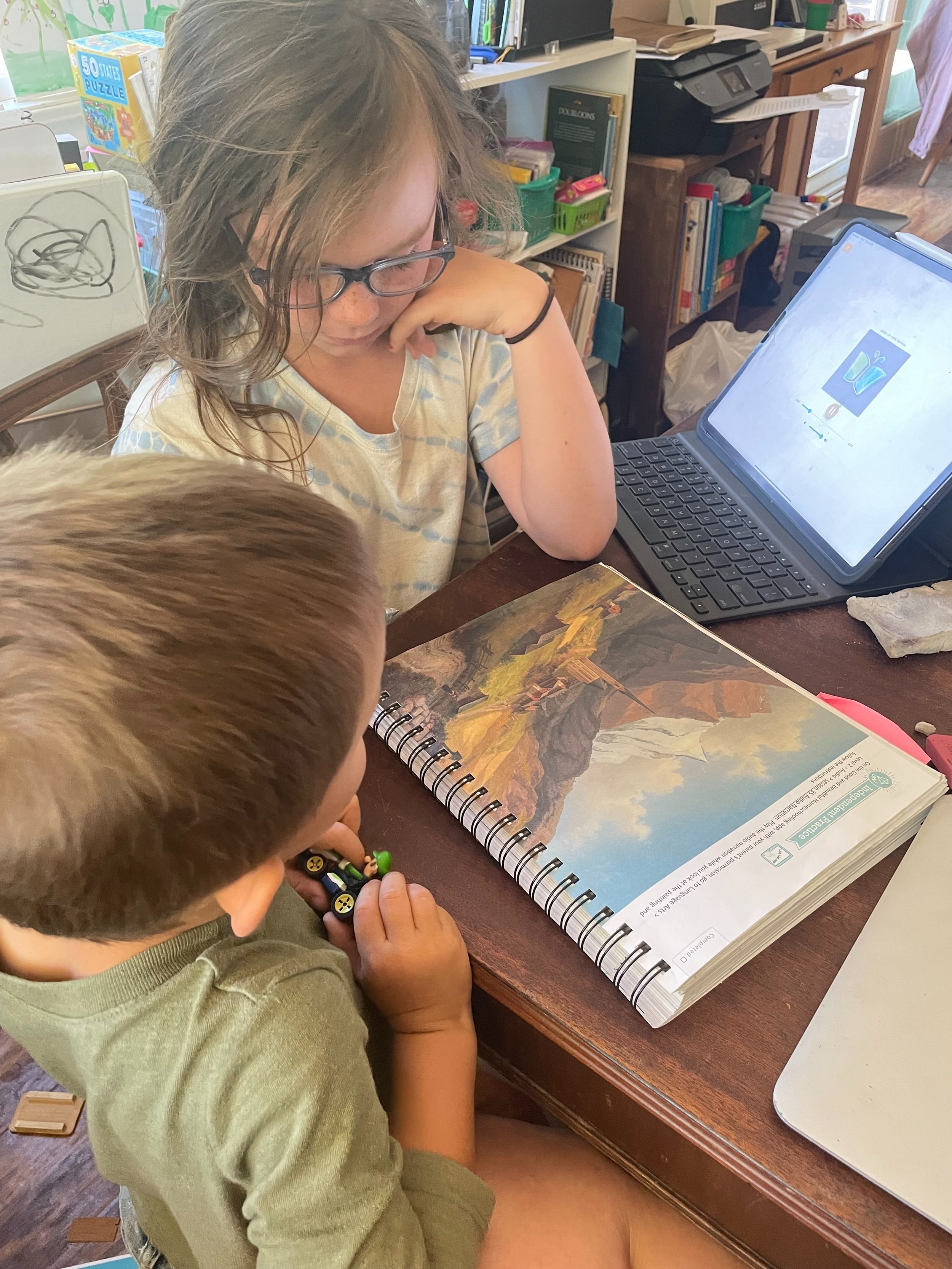Integrating Art and Creativity into Your Homeschool Curriculum
One of our greatest freedoms as homeschoolers is the ability to build learning experiences around what matters most to our families. We get to choose what learning looks like in our homes—including the freedom to let it be joyful, hands-on, and intensely creative.
It can be easy to focus on core subjects like reading and math, especially when we’re tracking progress or trying to meet state requirements. But something special happens when we make space for art and creative expression in our homeschool rhythms. Our children grow in confidence, make connections, and find their voice.
Art doesn’t have to be fancy, expensive, or time-consuming to be meaningful. It can be simple, seasonal, and woven right into what you’re already doing. Whether your child is an aspiring artist or loves to make things, creativity has a place in your homeschool.
Why Art Matters in Home Education
Art invites our children to observe more carefully, imagine more fully, and express themselves more freely. It nurtures more than just skill—it develops character, attention, and resilience. When children engage in creative work, they learn to try, adjust, and keep going—the same habits we want them to carry into all areas of life.
Here are just a few of the benefits of including art in your homeschool:
It builds confidence. Creative work gives kids something truly theirs—something to be proud of.
It supports emotional health. Art can be a quiet space on a busy day. It allows for reflection and calm.
It strengthens connections. Art can link beautifully to history, literature, nature study, and more.
It fosters observation and attention to detail. Drawing, painting, and sculpting all help kids see more closely.
Simple Ways to Add Art to Your Week
Incorporating art doesn’t have to mean adding a whole new subject to your planner. In fact, the easiest way to begin is to find small ways to fold it into what you’re already doing. Here are a few ideas to get you started:
1. Try “Art Fridays”
Set aside one afternoon a week to slow down and create together. You can rotate between painting, collage, sculpture, or seasonal crafts. Choose a new medium to explore monthly, or keep it simple with your favorite materials.
2. Keep a Sketchbook
Give each child a sketchbook to draw, label, or record what they’re learning. These can be used for nature journaling, illustrating a story, or even visual note-taking during read-aloud.
3. Study an Artist of the Month
Pick one artist to learn about each month. Read picture books or short biographies, look at their work, and try a project in their style. This is a wonderful way to introduce art history without needing a textbook.
4. Let Projects Be Cross-Curricular
Encourage kids to make posters, dioramas, or illustrated timelines during history and science. Art doesn’t need to be separate—it can be part of how your child shows what they’ve learned.
5. Invite Creativity with Open-Ended Supplies
Keep a bin stocked with basic art supplies like paper, markers, scissors, glue, and watercolors. Add recycled materials, magazines, fabric scraps, or nature finds. This will give your kids freedom to explore without a set outcome.
Local Resources to Support Art Learning
Walla Walla has various excellent local resources for homeschool families looking to add more art to their week. From community classes to free events, here are a few options to explore:
Whitman’s Picture Lab – Hands-on art projects and workshops that often support homeschool and co-op groups.
ArtWalla – Community organization promoting art education and events throughout the region.
Libraries and Museums – Look for rotating exhibits, art-focused storytimes, and seasonal workshops.
Craft Stores – Check for low-cost craft kits, open house events, or supply discounts for educators.
Creativity on a Budget
You don’t need a room full of supplies or an art degree to help your children engage with creative work. Some of the best projects come from a single sheet of paper and a few colored pencils.
Here are a few budget-friendly ideas:
Stock up on sketchbooks and supplies during back-to-school sales
Use free YouTube tutorials like Art for Kids Hub for step-by-step projects
Check thrift stores for frames, books, or gently used supplies
Repurpose cardboard, egg cartons, and cereal boxes for creative builds
Print coloring pages of famous artworks or natural elements to practice observation
The goal isn’t perfection—it’s process and play. Give your kids the freedom to try, mess up, and try again.
Keep It Light and Joyful
Art doesn’t need to become another subject to manage. Let it be an invitation. The best moments often come when we’re not grading, guiding, or explaining—just making space and letting the creativity unfold.
You don’t need to know how to draw or paint to foster a love of art in your children. Your willingness to sit beside them, make your own mistakes, and enjoy the process will speak louder than any lesson plan.
If your child resists traditional art projects, look for creative alternatives like building, sewing, woodworking, or photography. Creativity comes in many forms—it all counts.
Your Homeschool, Your Rhythm
Including art in your homeschool isn’t about being perfect or producing a gallery-worthy project. It’s about creating moments for your child to notice, imagine, and express. It’s about slowing down enough to make something beautiful-or even messy—just because.
You don’t have to do it every day. Just start somewhere small and see what grows from there.
If you’d like help getting started, we’re working on a printable list of art ideas you can rotate through month by month. Let us know if you’d like a copy sent to your inbox.


